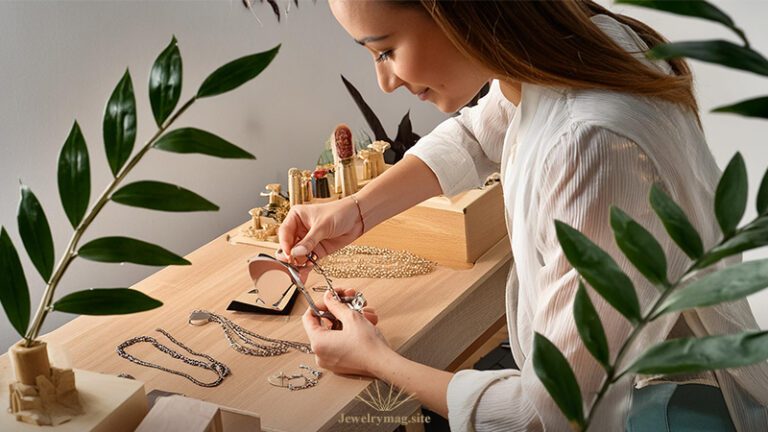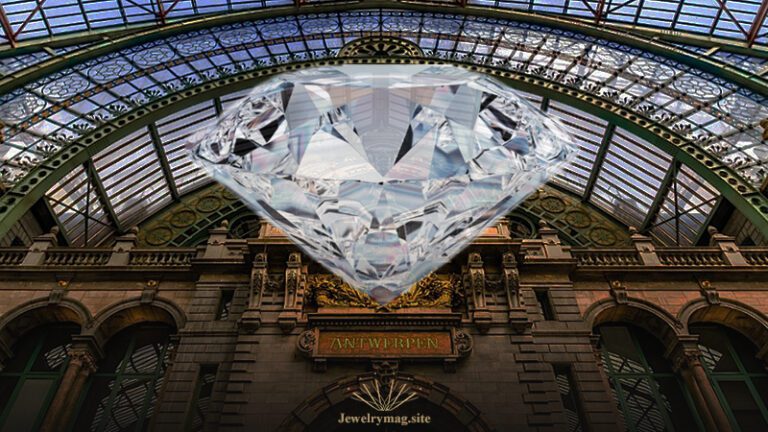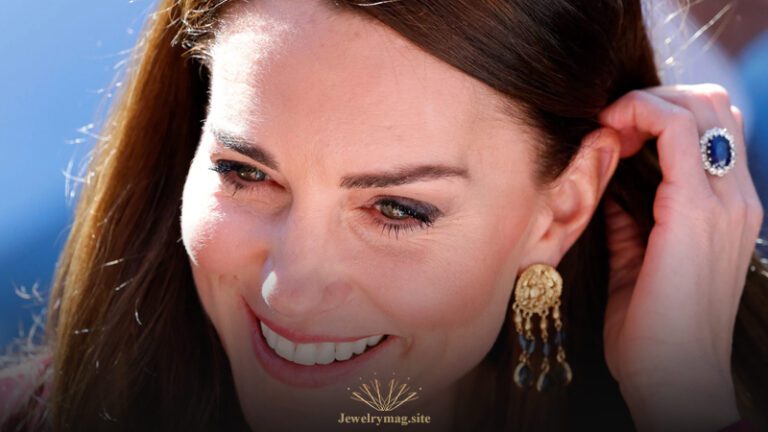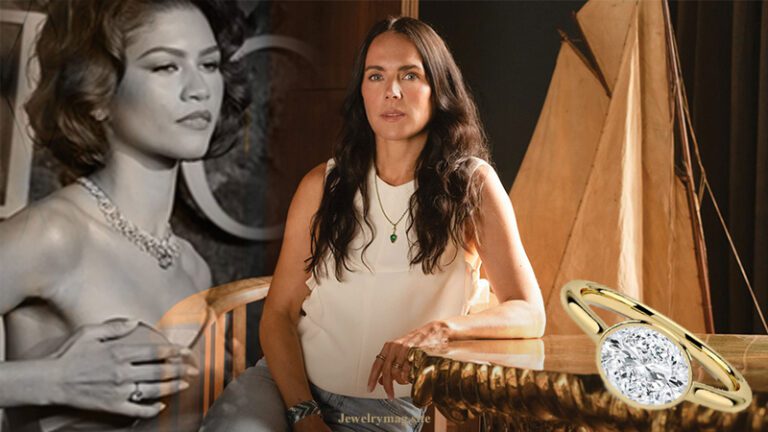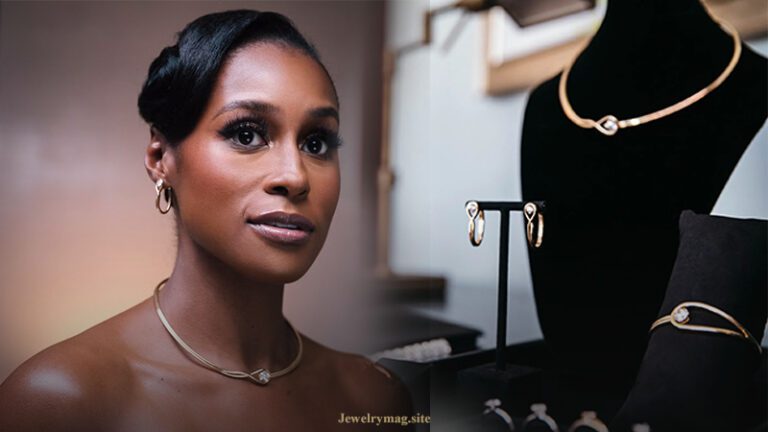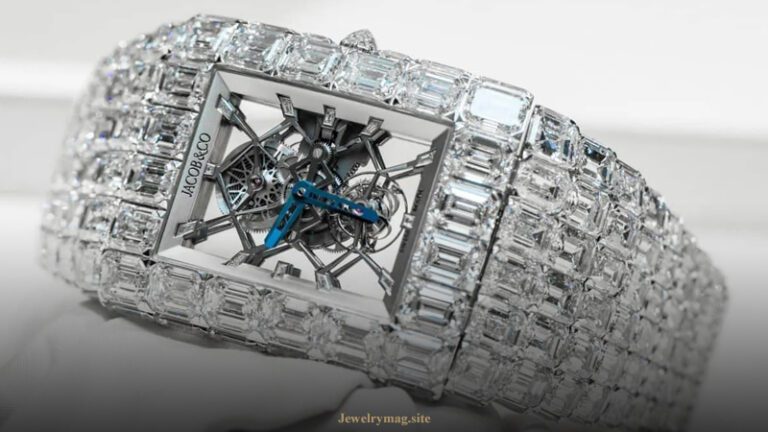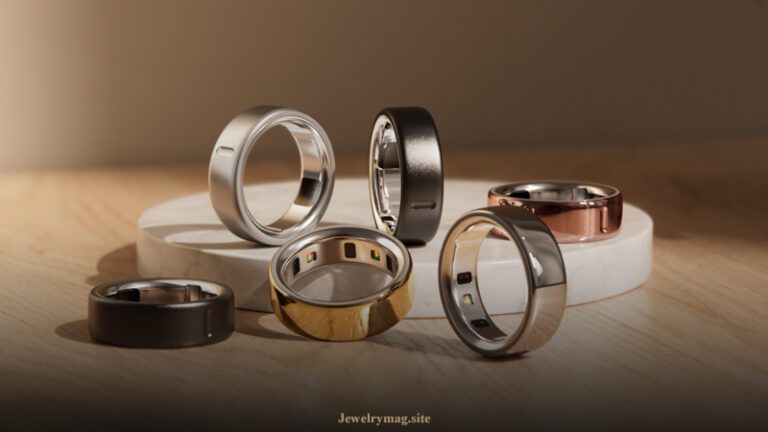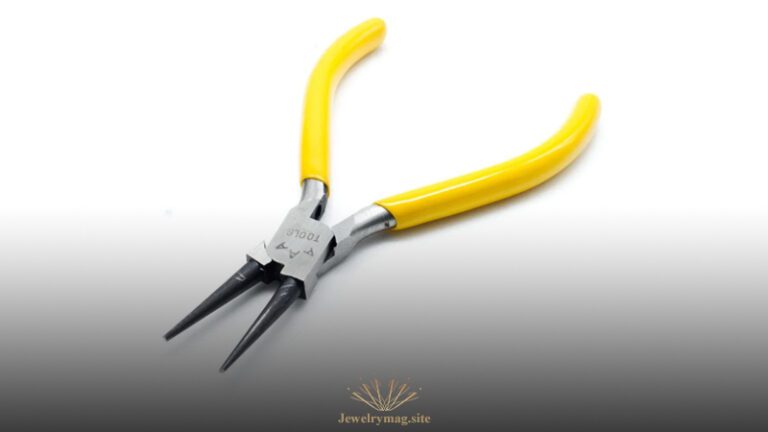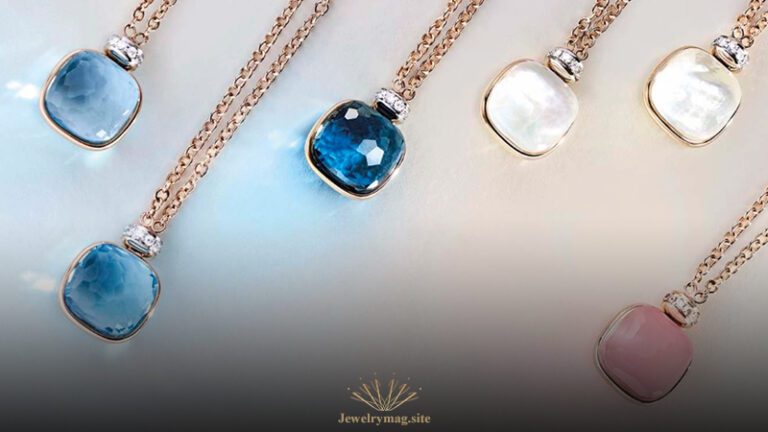Jewelry design is a unique blend of artistry, fashion, and craftsmanship. If you have a passion for creativity, a keen eye for detail, and a love for accessories, a career in jewelry design could be perfect for you. This guide will walk you through the essential steps and provide valuable insights on how to become a jewelry designer or how to become a jewellery designer !
1. Understanding Jewelry Design
Before diving into the technical aspects, it’s crucial to understand what jewelry design entails. Jewelry designers create wearable art using materials like precious metals, gemstones, beads, and more. They blend aesthetics with functionality, ensuring each piece is both beautiful and practical.
2. Developing a Passion and Vision
To become a jewelry designer, Passion is the driving force behind any successful career. Start by exploring different styles and types of jewelry. Visit museums, attend jewelry exhibitions, and read books about the history of jewelry. Identify what inspires you and develop a clear vision of your unique style.
3. Acquiring Basic Skills
To become a jewelry designer, you need to acquire certain fundamental skills:
- Drawing and Sketching: Being able to sketch your designs is essential. This skill helps you communicate your ideas clearly to others, especially to clients and manufacturers.
- Knowledge of Materials: Understanding different metals, gemstones, and other materials is crucial. Learn about their properties, costs, and how they react under various conditions.
- Computer-Aided Design (CAD): Modern jewelry designers often use CAD software to create precise and detailed designs. Familiarize yourself with popular programs like Rhino, Matrix, or JewelCAD.
4. Enrolling in a Jewelry Design Course
To become a jewelry designer, Formal education can significantly enhance your skills and knowledge. Look for reputable jewelry design courses offered by art schools, colleges, or specialized institutions. These programs often cover:
- Basic and Advanced Design Techniques
- Gemology
- Metalworking
- Casting and Mold Making
- Jewelry Repair
Courses also provide opportunities to work on projects, receive feedback from experienced designers, and build a portfolio.
5. Gaining Practical Experience
To become a jewelry designer, Hands-on experience is invaluable in the jewelry design industry. Consider internships or apprenticeships with established designers or jewelry firms. This experience allows you to:
- Learn from Professionals: Gain insights into industry standards, client management, and the business side of jewelry design.
- Network: Build connections with other designers, suppliers, and potential clients.
- Hone Your Craft: Practice your skills in a real-world setting, refining your techniques and gaining confidence.
6. Building a Portfolio
To become a jewelry designer, A strong portfolio showcases your skills, creativity, and style. Include high-quality photographs of your best pieces, sketches, CAD designs, and any projects you’ve completed during your education or internships. A well-organized portfolio is essential when applying for jobs, internships, or presenting your work to potential clients.
7. Understanding the Business Side
Jewelry design isn’t just about creating beautiful pieces; it’s also about running a successful business. To become a jewelry designer, Learn the basics of entrepreneurship, including:
- Marketing and Branding: Develop a unique brand identity and use social media, a professional website, and other marketing strategies to promote your work.
- Pricing Your Work: Understand how to price your jewelry to cover costs and make a profit.
- Sales and Distribution: Decide whether you’ll sell your jewelry online, through retail stores, or at craft fairs and exhibitions.
8. Staying Updated with Trends
The fashion industry is constantly evolving, and jewelry trends change rapidly. To become a jewelry designer, Stay updated by:
- Following Fashion Shows: Observe trends showcased in major fashion events like New York Fashion Week or Paris Fashion Week.
- Reading Industry Publications: Subscribe to jewelry and fashion magazines and blogs.
- Networking: Attend industry events and join professional organizations to stay connected with other designers and industry insiders.
9. Establishing Your Brand
To become a jewelry designer, Creating a strong brand is crucial for standing out in the competitive jewelry market. Your brand should reflect your unique style and values. Consider the following:
- Logo and Packaging: Design a memorable logo and packaging that reflects the quality and style of your jewelry.
- Online Presence: Build a professional website showcasing your portfolio, story, and e-commerce capabilities. Utilize social media platforms to connect with potential customers and share your creative process.
- Customer Service: Provide exceptional customer service to build a loyal customer base. Positive reviews and word-of-mouth referrals are invaluable.
10. Creating a Collection
Once you’ve established your brand, focus on creating a cohesive jewelry collection. A collection should have a unifying theme or style and consist of several pieces that complement each other. This approach makes it easier for customers to find matching pieces and increases sales potential.
11. Launching Your Collection
When you’re ready to launch your collection, plan a marketing strategy to create buzz and attract buyers. Consider:
- Press Releases: Send press releases to fashion and jewelry magazines, blogs, and local newspapers.
- Launch Events: Host a launch event or exhibition to showcase your collection. Invite influencers, media, and potential buyers.
- Online Marketing: Use social media, email marketing, and online ads to promote your collection.
12. Networking and Building Relationships
Building a successful jewelry design career involves establishing relationships with various stakeholders, including:
- Suppliers: Maintain good relationships with suppliers to ensure you have access to high-quality materials.
- Retailers: If you plan to sell your jewelry through retail stores, build relationships with store owners and buyers.
- Customers: Engage with your customers through social media, newsletters, and personalized service to build a loyal customer base.
13. Continuing Education and Professional Development
The jewelry industry is always evolving, and To become a jewelry designer, continuing education is essential to stay competitive. Consider:
- Advanced Courses: Enroll in advanced jewelry design or gemology courses to refine your skills.
- Workshops and Seminars: Attend workshops and seminars to learn new techniques and stay updated with industry trends.
- Professional Organizations: Join professional organizations like the Jewelry Design Professionals’ Network (JDPN) or the Gemological Institute of America (GIA) for networking and development opportunities.
14. Managing Finances
To become a jewelry designer, Proper financial management is crucial for the success of your jewelry design business. Learn the basics of accounting, budgeting, and financial planning. Consider hiring a professional accountant to help you manage your finances and ensure your business is profitable.
15. Adapting to Challenges
Every career has its challenges, and jewelry design is no exception. Be prepared to face:
- Creative Blocks: Find inspiration in different sources, take breaks, and don’t be afraid to experiment with new ideas.
- Competition: Focus on your unique style and continuously improve your skills to stay ahead of the competition.
- Economic Fluctuations: Diversify your product range and explore different markets to mitigate the impact of economic downturns.
16. Seeking Mentorship
To become a jewelry designer, Finding a mentor in the jewelry design industry can provide valuable guidance and support. A mentor can offer:
- Advice and Insights: Benefit from their experience and knowledge.
- Networking Opportunities: Gain access to their professional network.
- Feedback: Receive constructive feedback on your designs and business strategies.
17. Exploring Different Career Paths
A career in jewelry design offers various paths. To become a jewelry designer, You can work for established jewelry brands, start your own business, or even focus on specific niches like:
- Custom Jewelry: Create personalized pieces for clients.
- Fashion Jewelry: Design trendy and affordable pieces for the fashion market.
- Fine Jewelry: Focus on high-end, luxury pieces using precious metals and gemstones.
18. Leveraging Technology
Technology plays a significant role in modern jewelry design.To become a jewelry designer, Stay updated with the latest technological advancements, such as:
- 3D Printing: Use 3D printing to create prototypes and intricate designs.
- CAD Software: Utilize advanced CAD software for precise and detailed designs.
- E-commerce Platforms: Sell your jewelry online using platforms like Etsy, Shopify, or your own website.
19. Building a Strong Online Presence
In today’s digital age, a strong online presence is essential for success. Focus on:
- Website: Create a professional website that showcases your portfolio, tells your story, and offers e-commerce capabilities.
- Social Media: Use platforms like Instagram, Facebook, and Pinterest to connect with potential customers and showcase your work.
- SEO: Optimize your website and content for search engines to increase visibility and attract more visitors.
20. Staying Passionate and Persistent
Lastly, passion and persistence are key to a successful career in jewelry design. To become a jewelry designer, Stay dedicated to your craft, continuously seek inspiration, and never stop learning. With hard work and determination, you can turn your passion for jewelry design into a fulfilling and prosperous career.
The Most Famous Jewelry Designers in the World
The world of jewelry design is adorned with talented artists who have set benchmarks with their creativity, craftsmanship, and innovation. Here’s a look at some of the most renowned jewelry designers who have made significant contributions to the industry.
1. Cartier
Cartier is a name synonymous with luxury and elegance. Founded in Paris in 1847 by Louis-François Cartier, the brand has become one of the most prestigious in the world. Cartier is known for its exquisite craftsmanship and iconic designs, such as the Cartier Love bracelet and the Panthère de Cartier collection.
2. Tiffany & Co.
Founded in 1837 by Charles Lewis Tiffany, Tiffany & Co. is an American luxury jewelry and specialty retailer. Tiffany is renowned for its diamond jewelry and has been a leader in setting standards for diamond quality. The Tiffany Setting engagement ring and the Heart Tag bracelet are some of its most iconic pieces.
this brand is always open to new ideas and has an answer for the most frequently asked question: How to become a jewelry designer for tiffany and co? all you have to do is applying via this link: https://www.tiffanycareers.com/#en/sites/CX
3. Van Cleef & Arpels
Established in 1906 by Alfred Van Cleef and his uncle Salomon Arpels, Van Cleef & Arpels is a French luxury jewelry company. Known for its innovative designs and use of precious stones, the brand’s creations, such as the Alhambra necklace and the Zip necklace, have become timeless classics.
4. Harry Winston
Harry Winston, often referred to as the “King of Diamonds,” founded his eponymous brand in 1932. The American jeweler is famous for acquiring some of the world’s most famous diamonds, including the Hope Diamond. Harry Winston’s designs are characterized by their extraordinary gemstones and exceptional craftsmanship.
5. Bvlgari
Founded in Rome in 1884, Bvlgari is an Italian luxury brand known for its bold designs and vibrant use of color. The brand’s iconic Serpenti collection, featuring serpent-inspired designs, and the B.Zero1 collection are celebrated for their innovative and daring styles.
6. Chopard
Chopard, a Swiss brand founded in 1860 by Louis-Ulysse Chopard, is known for its luxurious jewelry and watches. The brand is famous for its Happy Diamonds collection, where moving diamonds are enclosed within transparent sapphire crystals, creating a playful and unique effect.
7. David Yurman
David Yurman, an American designer, founded his brand in 1980 along with his wife, Sybil. Known for its cable motif, which is a twisted helix adorned with gemstones, the brand’s Cable bracelet has become an iconic piece in the jewelry world.
8. Mikimoto
Mikimoto is renowned for its high-quality cultured pearls. Founded by Kokichi Mikimoto in 1893, the Japanese brand is credited with creating the first cultured pearl. Mikimoto’s designs often feature elegant pearl arrangements combined with diamonds and other precious stones.
9. Graff
Founded in 1960 by Laurence Graff, Graff is a British jeweler known for its exceptional diamonds and intricate designs. Graff’s pieces often feature rare and large gemstones, making them highly sought after by collectors and connoisseurs.
10. Buccellati
Buccellati, an Italian jewelry brand founded in 1919 by Mario Buccellati, is known for its distinctive textural designs and intricate engraving techniques. The brand’s creations often resemble fine lace and fabric, showcasing extraordinary craftsmanship.
11. Piaget
Founded in 1874 by Georges Piaget, the Swiss brand Piaget is known for its luxurious watches and jewelry. Piaget’s designs often feature intricate detailing and the use of vibrant gemstones. The brand’s Possession collection, known for its rotating rings, is particularly popular.
12. Fred Leighton
Fred Leighton is renowned for its collection of vintage and antique jewelry. The brand specializes in rare pieces from the Georgian, Victorian, Edwardian, and Art Deco periods. Celebrities often choose Fred Leighton pieces for red carpet events.
13. Lorraine Schwartz
Lorraine Schwartz is a New York-based jewelry designer known for her bold and glamorous designs. Her creations are frequently seen on celebrities at major events like the Oscars and the Met Gala. Beyoncé, Kim Kardashian, and Blake Lively are among her high-profile clients.
14. Alexandra Mor
Alexandra Mor is known for her limited-edition and one-of-a-kind pieces that feature signature details such as knife-edged wire and yellow gold threading. Her designs often incorporate ethically sourced materials and are inspired by nature and architecture.
15. Stephen Webster
Stephen Webster, a British designer, is known for his edgy and unconventional designs. His work often features intricate details and bold motifs, such as his famous Crystal Haze collection, which combines colored gemstones with a faceted quartz overlay.
Becoming a jewelry designer requires a blend of creativity, technical skills, business acumen, and perseverance. By following these steps and staying committed to your vision, you can build a successful career in this exciting and rewarding field. Whether you dream of creating bespoke pieces for clients or launching your own jewelry line, the journey to becoming a jewelry designer is a fulfilling and enriching experience.

